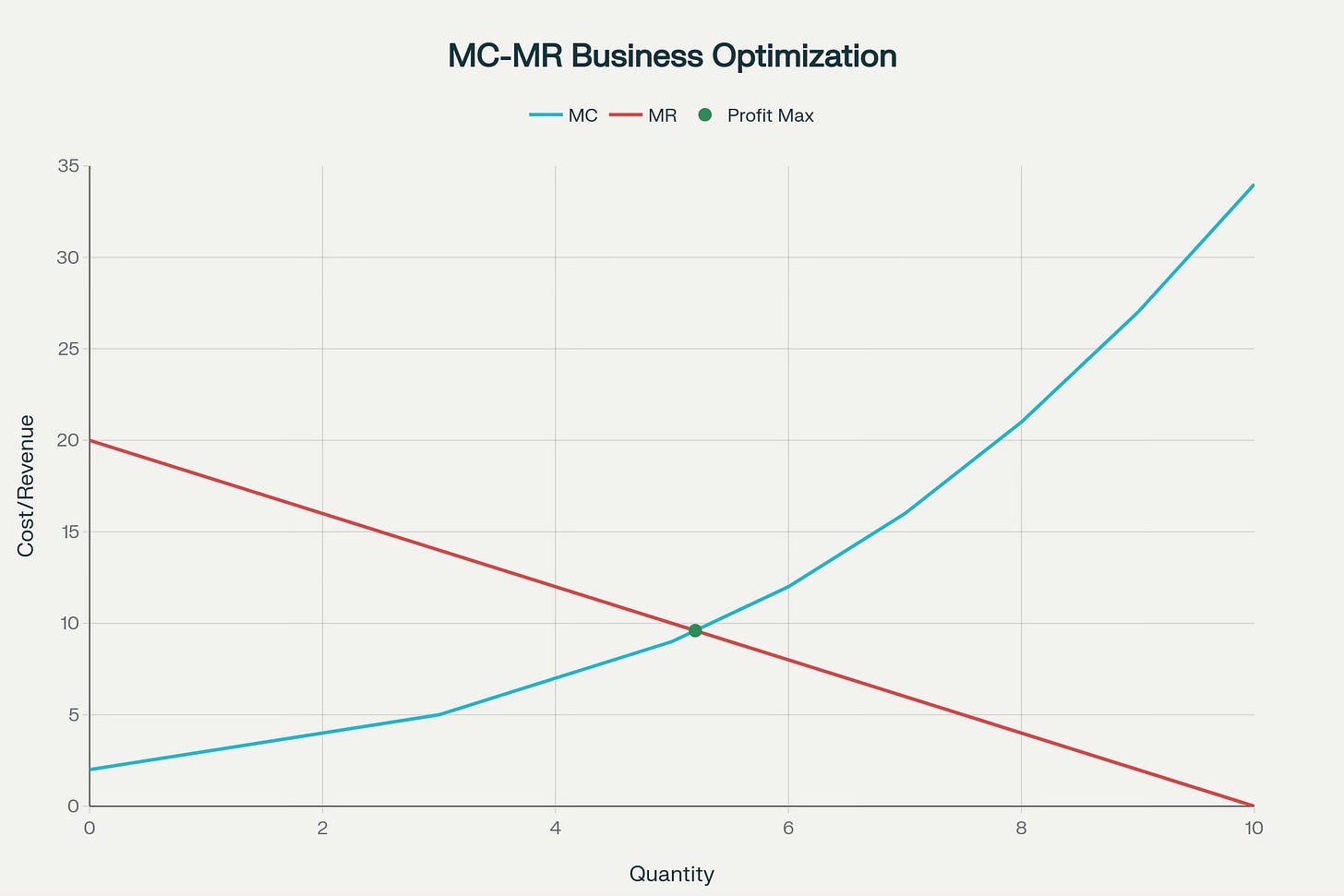Operating Economics: 10 Concepts from Google’s Economist to Help You Build a Better Company
10 Concept from Hal Varian's Classic Microeconomics Text to Help You Operate Better
New to Operating by John Brewton?
Check out these reader favorites:
Operators often drown in dashboards yet miss the single discipline that matters: thinking at the margin. Hal Varian’s Intermediate Microeconomics offers a toolkit for decision-making that founders can apply directly to pricing, allocation, scaling, and incentive design. This article distills ten of Varian’s core lessons into practical moves for running companies more effectively.
Author Note: Professor Varian’s Intermediate Microeconomics textbook was seminal to my intellectual and academic development. I’m in debt to him each week of my professional life for the lessons its pages passed along and for how it inspired me about the field of economics.
1. Model Building and Optimization
Definition: Optimization is the process of choosing the best feasible option given objectives and constraints.
Lesson. Build simple models to clarify choices. Optimization is the heart of decision-making.
Operating Tactic: Operators should treat models as decision maps rather than academic exercises. Even a simple spreadsheet with three assumptions and two constraints can force clarity. For example, when pricing new tiers, a model that compares projected conversion rates, churn, and support hours can quickly highlight the most profitable option. Models don’t need to predict the future perfectly, they simply frame the trade-offs so leaders can move faster and with more confidence.
Metric: Track decision cycle time and regret rate (number of decisions later reversed due to poor assumptions).
2. Margins and Trade-offs
Definition: Marginal analysis evaluates the effect of small changes in inputs or decisions on outcomes.
Lesson: Decisions live at the margin. Compare incremental cost with incremental benefit.
Operator Move: Founders often debate big shifts, but most gains come from marginal changes. Hiring one more salesperson, adding one more feature, or raising prices by 2% can matter more than sweeping reorganizations. By asking “what happens if we add just one more unit of input?” leaders can identify bottlenecks and avoid waste. This mindset pushes operators to evaluate small bets continuously rather than chase grand strategies in isolation.
Metric: Contribution margin per marginal hour. Stop allocating resources once marginal revenue falls below marginal cost.
Keep reading with a 7-day free trial
Subscribe to Operating by John Brewton to keep reading this post and get 7 days of free access to the full post archives.




